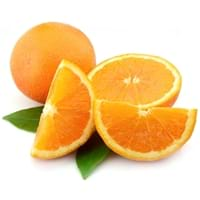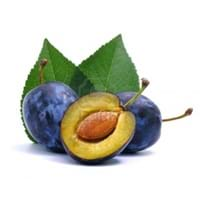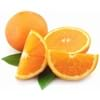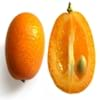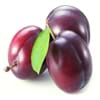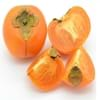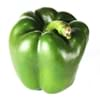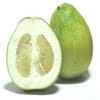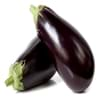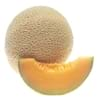Health Benefits
Arthritis treatment, Cancer prevention, Heart care
Cancer prevention, Cures gastro-intestinal troubles, Heart care, Increase in haemoglobin, Prevents high blood pressure
General Benefits
Anti-inflammatory properties, Cures cough, Cures fever, Digestive aid, Healing of wounds, Maintains healthy cholesterol level
Anti-inflammatory properties, Boosts immune system, Digestive aid, Eye care, Flu treatment, Helps in weight loss, Maintains healthy cholesterol level, Treatment of common cold
Skin Benefits
Anti-aging benefits, Brightens and lightens complexion, Reduces wrinkles, Treatment of dark spots
Anti-aging benefits, Brightens and lightens complexion, Reduces wrinkles, Skin revitalization, Treatment of dark spots
Hair Benefits
Promotes longer and healthier hair, Protects hair, Rejuvenates scalp, Shiny hair
Prevents hair loss, Promotes longer and healthier hair, Protects hair, Remedy for split ends, Treatment of dandruff
Allergy Symptoms
Abdominal cramps, Hives, Itching, Nausea, Wheezing
Abdominal pains, Anaphylaxis, Vomiting
Side Effects
Allergic reaction, Skin rash, Possibly unsafe during pregnancy
Allergic reaction
Best Time to Eat
As a snack in the late afternoon, Eat the fresh ones, avoid mixing with any other foods, don't eat after meal., Morning time (before lunch), Strictly avoid empty stomach
As a snack in the late afternoon, Don't consume at night and before bed, Don't eat after meal, Morning time (before lunch)
Vitamin B5 (Pantothenic Acid)
Vitamin C (Ascorbic Acid)
Vitamin K (Phyllochinone)
Phytosterol
Not Available
Calories in Fresh Fruit with Peel
Not Available
Calories in Fresh Fruit without Peel
Not Available
Calories in Frozen Form
Not Available
Varieties
Clementine, Dancy, King Mandarin, Murcott, Ponkan, Robinson, Satsuma and Sunburst
Merryweather Damson, Shropshire Prune, President plum, Damson farleigh and Damson langley bullace
Inside Color
Orange
Yellow
Taste
Sweet-Sour
Juicy, Sweet, Tart
Origin
South-Eastern Asia
Syria
Grows on
Not Available
Trees
Soil Type
Well-drained
Clay, Loam, Moist, Sandy loam, Well-drained
Climatic Conditions
Sunny
Cold
Facts about
- It is known by another name ' Mandarin'.
- Oil extracted from its peel is used in various skin and hair care products.
- Tangerines is also known as the ‘Christmas Orange’ because it is used to stuff kids' stockings..
- The name Damson originates from the original name 'Damacus plum'.
- Damson wine was very popular in 19th century.
- This fruit is often used in jams due to its slightly tart behaviour.
Spirits
Not Available
Yes
Cocktails
Not Available
Yes
Top Producer
China
United Kingdom
Other Countries
Brazil, Iran, Italy, Japan, Korea, Morocco, Spain, Turkey
Ireland, United States of America
Top Importer
China
United States of America
Top Exporter
Spain
France
Botanical Name
Citrus reticulata
Prunus domestica subsp. insititia
Synonym
Citrus clementina or Citrus nobilis
Not Available
Subkingdom
Tracheobionta
Tracheobionta
Division
Magnoliophyta
Magnoliophyta
Class
Magnoliopsida
Magnoliopsida
Species
C. reticulata
Prunus domestica subsp. insititia
Generic Group
Citrus fruit
Not Available
Difference Between Tangerine and Damson
We might think that Tangerine and Damson are similar with respect to nutritional value and health benefits. But the nutrient content of both fruits is different. Tangerine and Damson Facts such as their taste, shape, color, and size are also distinct. The difference between Tangerine and Damson is explained here.
The amount of calories in 100 gm of fresh Tangerine and Damson with peel is Not Available and 46.00 kcal and the amount of calories without peel is 53.00 kcal and Not Available respectively. Thus, Tangerine and Damson belong to Low Calorie Fruits and Low Calorie Fruits category.These fruits might or might not differ with respect to their scientific classification. The order of Tangerine and Damson is Sapindales and Rosales respectively. Tangerine belongs to Rutaceae family and Damson belongs to Rosaceae family. Tangerine belongs to Citrus genus of C. reticulata species and Damson belongs to Prunus genus of Prunus domestica subsp. insititia species. Beings plants, both fruits belong to Plantae Kingdom.
